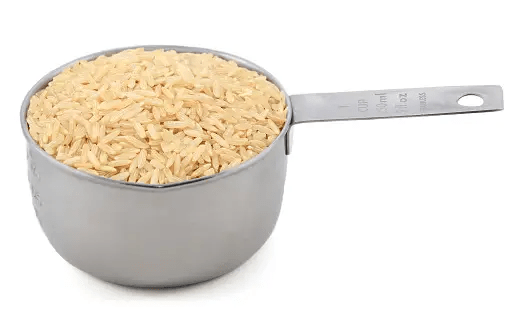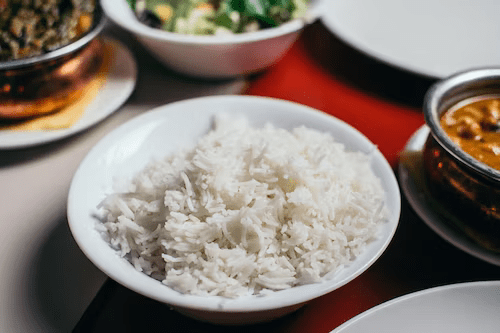
How Many Grains of Rice are in a Cup
When it comes to cooking rice, one common question that often arises is, “How many grains of rice are in a cup?” This question is crucial for portion control, meal planning, and achieving perfect rice-to-water ratios. Let’s clear this!
Understanding Rice Grains Measurements
To understand the number of grains in a cup of rice, it’s essential to grasp the concept of rice cup measurements. A rice cup, specifically designed for measuring rice, differs slightly from a standard measuring cup. The rice cup holds approximately 180 milliliters (or ¾ cup) of rice. Using the appropriate cup for measuring rice is vital to ensure accurate results in your cooking endeavors.
Rice grain size also plays a role in the number of grains that fit into a cup. For instance, long-grain rice tends to have fewer grains per cup compared to short-grain varieties. The larger size of long-grain rice means that each grain occupies more space, resulting in a lower grain count. Conversely, smaller grains found in short-grain rice varieties can fit more grains into a cup.
Check: Orange with Seeds
Calculating the Number of Grains in a Cup
Exact calculations for the number of grains in a cup of rice can be challenging due to various factors such as grain size, shape, and density. However, we can provide an average estimate based on common rice varieties.
Here’s a general comparison of the estimated number of grains in a cup for different types of rice:
| Rice Variety | Estimated Number of Grains in a Cup |
|---|---|
| Jasmine Rice | 2,000 – 2,200 grains |
| Basmati Rice | 1,800 – 2,000 grains |
| Short-Grain Rice | 2,500 – 2,800 grains |
| Brown Rice | 1,600 – 1,800 grains |
Please note that these estimates can vary depending on factors such as the specific brand, grain size variations within the variety, and the way the rice is packed. It’s essential to remember that rice grains are not uniform in shape or size, resulting in natural variations in the estimated counts.
1/4 Cup Measurement: How Many Grains of Rice?
If you’re curious about the number of grains in 1/4 of a cup, we can provide a proportional estimate based on the count for a full cup. As a rough approximation, 1/4 of a cup would contain around 500 – 700 grains of rice. However, it’s important to note that this estimate may not be entirely precise due to variations in grain size, packing density, and individual rice varieties.

14 Cup Measurement How Many Grains of Rice
Benefits of Grains of Rice?
Rice, in its various forms, offers several health benefits. Here are some key advantages:
- Energy Source: Rice is a rich source of carbohydrates, providing the body with essential energy to fuel daily activities.
- Nutritional Value: Brown rice, in particular, contains higher levels of fiber, vitamins, and minerals compared to its white counterpart. It is also rich in antioxidants that help protect against cell damage.
- Digestive Health: The fiber content in rice, especially in brown rice, promotes healthy digestion and aids in maintaining regular bowel movements.
- Gluten-Free: Rice is naturally gluten-free, making it an excellent choice for individuals with gluten intolerance or celiac disease.
- Versatility: Rice serves as a staple in various cuisines around the world, allowing for countless delicious and diverse meal options.
Check: Can You Eat Shrimp Tails?
7 Recommended Stages of Rice Consumption
Different types of rice are suitable for varying stages of consumption. Here’s a table outlining the recommended stages for popular rice varieties:
| Rice Variety | Recommended Stage of Consumption |
|---|---|
| White Rice | Fully milled grains with bran removed; suitable for daily consumption |
| Brown Rice | Unpolished whole grain with bran intact; high in nutrients and fiber; suitable for health-conscious individuals |
| Jasmine Rice | Fragrant and slightly sticky grains; ideal for Asian dishes such as stir-fries and curries |
| Basmati Rice | Long, aromatic grains; popular in Indian and Middle Eastern cuisines; perfect for pilafs and biryanis |
| Arborio Rice | Short-grain rice with a high starch content; commonly used in risottos and rice puddings |
| Sushi Rice | Sticky and slightly sweet; traditionally used in sushi and other Japanese dishes |
| Wild Rice | Nutty-flavored whole grain; often used in salads and side dishes |
It’s important to note that the recommended stages of consumption are general guidelines, and personal preferences may vary. Some individuals may prefer brown rice for its nutritional benefits, while others may opt for white rice for its versatility in cooking.
Check: Is Chick fil A Halal?
FAQs
Are the estimated grain counts for rice varieties the same across different brands?
No, the estimated grain counts can vary slightly between different brands due to factors such as the milling process, quality control, and grain selection.
Does the age of rice affect the number of grains in a cup?
The age of rice doesn’t significantly impact the number of grains in a cup. However, older rice may have slightly drier grains, leading to a potential difference in packing density.
How tightly should I pack the rice in the cup?
It’s best to lightly scoop the rice into the cup without compressing or shaking it. The goal is to achieve a natural settling of the grains without forcing them together.
Can I use a standard measuring cup instead of a rice cup?
While a standard measuring cup can work, using a dedicated rice cup provides more accurate measurements since it is specifically designed for rice.
In the world of rice measurements, accuracy is essential for cooking perfection. Understanding the approximate number of grains in a cup helps you achieve ideal proportions and ensure consistent results in your rice-based dishes. By using the appropriate measuring tools and taking note of variations in grain sizes, you can fine-tune your cooking techniques and create delectable rice dishes every time.
